|
|
|
|
|
|
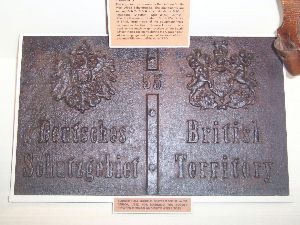 |
|
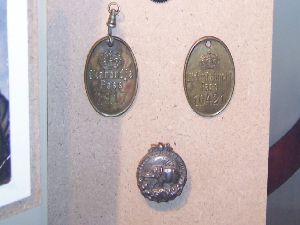 |
|
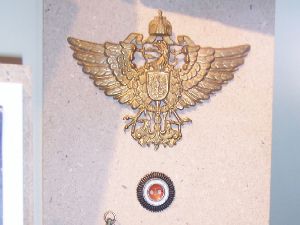 |
|
A border post marking used between the "Deutsches
Schutzgebeit" of German South West Africa and the "British
Territory" of South Africa from the South
African National Museum of Military History in Johannesburg. |
|
Two native identification passes from
Okahandja and Lüderitzbucht above an elephant badge worn by
Schutztruppe and other colonial veterans. These items are also on
display at the
South
African National Museum of Military History. |
|
A brass imperial German eagle worn as a
head dress badge. It could have been worn on a tropical helmet by a
colonial official or on the tarbush of a German East African
Polizeitruppe askari. Below it is an Imperial cockade from the right
hand side of a Schutztruppe Südwester hat. These items are also on
display at the
South
African National Museum of Military History. |
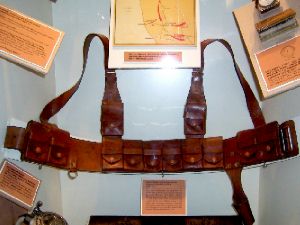 |
|
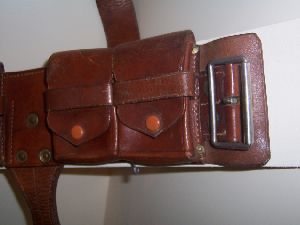 |
|
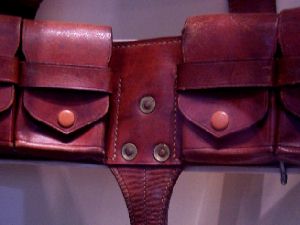 |
|
A fine example of the personal equipment
used by the Schutztruppe in German South West Africa from the
South
African National Museum of Military History. As the museum
caption explains large stocks of this equipment were captured by
South African forces and later used by them during the campaign in
German East Africa. |
|
A view of the left side of the belt
buckle. |
|
Another view of the left hand side with
the bayonet frog. |
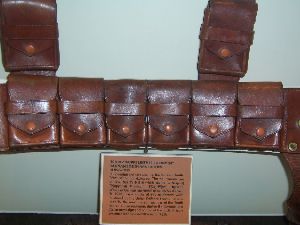 |
|
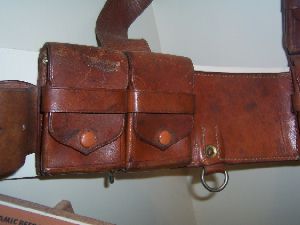 |
|
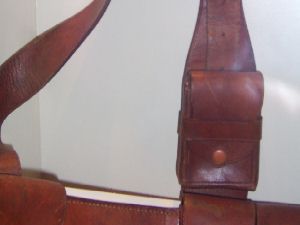 |
|
Another view of the German South West
African equipment showing the Ammunition pouches. Note that this was
the later model of equipment used with buttons as well as a leather
strap to hold the pouches closed. |
|
Another view of the equipment showing the
right side with a ring to attach a water bottle to. |
|
Another view of the right side showing one
of the ammunition pouches placed up the shoulder strap. The first
early models of this style of equipment did not have these
additional pouches. |
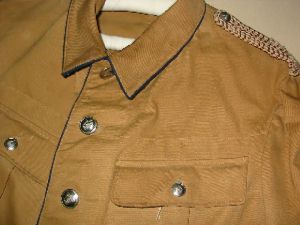 |
|
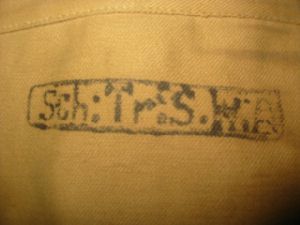 |
|
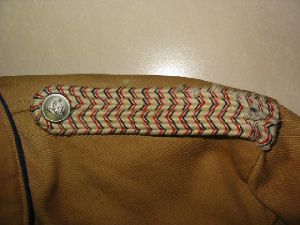 |
|
An other ranks Schutztruppe 1896 Feldrock
or khaki tunic in near perfect condition. These tunics were worn by
the majority of Germans in the Schutztruppe in German South West
Africa, German East Africa and in Cameroon between 1896 and 1918.
Note the blue piping, white metal buttons with the imperial crown
and sloping breast pockets. See the
Schutztruppe Khaki Tunic Details Page for more information. This
tunic is on display at the
War Museum of the Boer Republics in Bloemfontein. |
|
The issue stamp inside the khaki tunic. It
reads Sch:Tr:S.W.A for "Schutztruppe Süd-West Afrika". |
|
The braided shoulder strap worn by all
other ranks and NCOs in imperial colours of black/white/red |
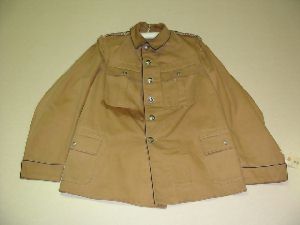 |
|
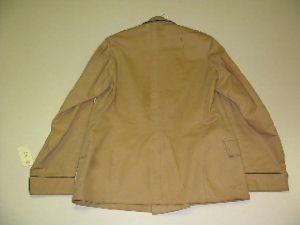 |
|
 |
|
A full front view of the Schutztruppe tunic. |
|
A full rear view. |
|
A peaked corduroy field cap belonging to an
ordinance officer in German South West Africa on display at the War
Museum of the Boer Republics in Bloemfontein. The cap itself is of
khaki corduroy with a black leather peak and a small imperial
cockade on the front of the hatband. The hatband is in black with
red piping. Different classes of official wore different coloured
hatbands and piping to distinguish their profession. |
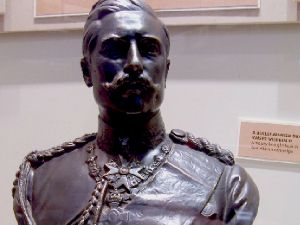 |
|
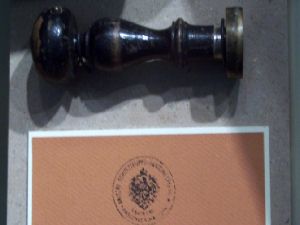 |
|
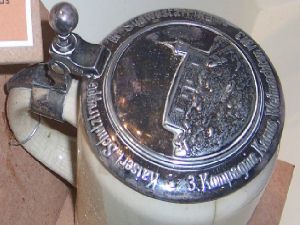 |
|
A bust of the German Emperor Kaiser Wilhelm II from the
South
African National Museum of Military History. |
|
An official stamp for documents from the
3rd Artillery Battery of the German South West African Schutztruppe
from the
South
African National Museum of Military History. |
|
A decorated beer Stein of the 3rd Company
of the German South West African Schutztruppe to commemorate
Christmas 1913. Again it is from the from the
South
African National Museum of Military History. |
|
|
|
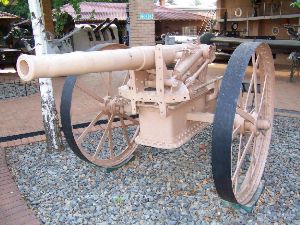 |
|
|
|
|
|
An 8.8cm gun from the SMS Königsberg on
display outside the
South
African National Museum of Military History. For more photos of
this gun and another 10.5cm gun see the page on the
SMS Königsberg Guns. |
|
|
|
|
|
|
|
|